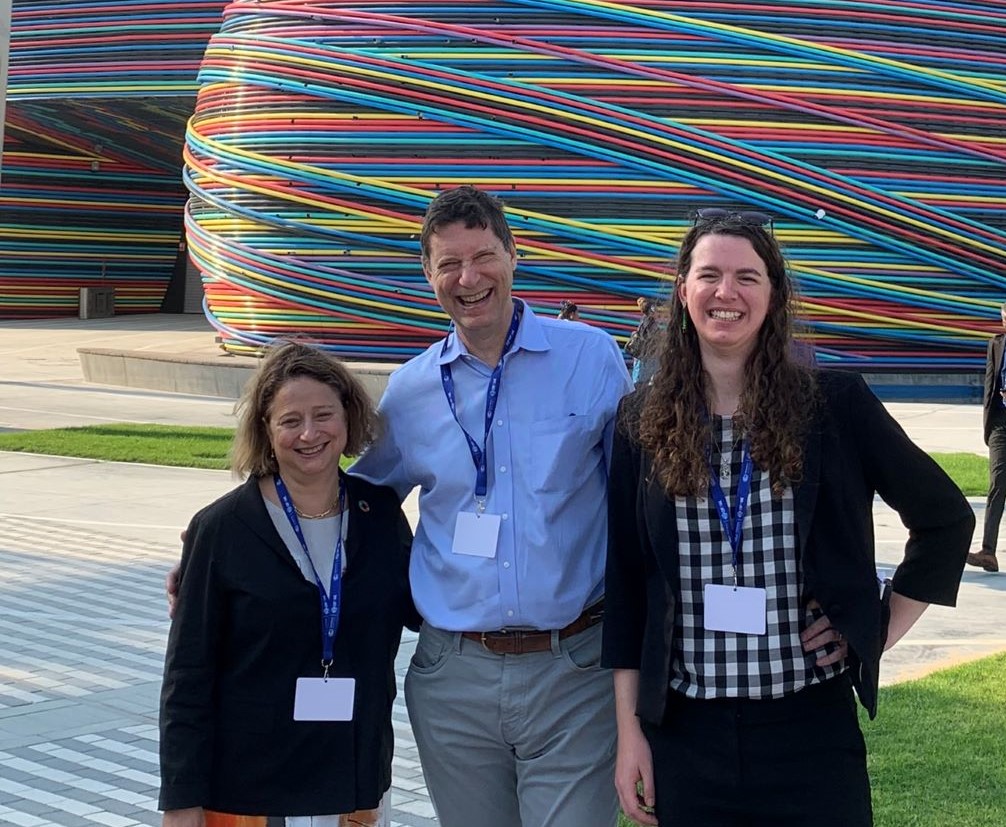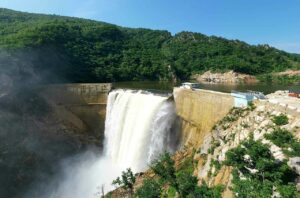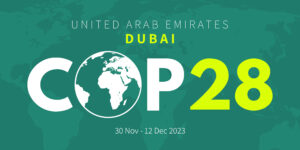With close to 100,000 participants at the 1,000-acre site, COP28 in Dubai was bigger than ever and everyone got a daily workout racing to meetings and speaking engagements across the giant venue. Three Stimson teams attended: The Environmental Security program was joined by Powering Peace and the Global Governance team.
Right off the bat on the first day there was cause for celebration as the voices from island states and least developed countries were finally heard after years of making the case that climate adaptation and resilience was needed now, with time running out for nations least responsible and most affected by the climate emergency. The PM from Tuvalu said it best, “we are in a climate war”, and our islands are washing away. The good news– the UN members committed and made pledges to the Loss and Damage Fund. Germany, France, Italy, and the COP28 host UAE made the largest commitments, and the total pledged amount exceeded $700 million by the end of the conference. The establishment of the Fund marks a historic step in helping those countries on the frontlines of climate change rebuild from unavoidable damages.
Building on this announcement Environmental Security Director Sally Yozell participated in four official side events with ministers, policymakers, scientists, and practitioners from the US government, the Global South, and the Commonwealth, including the Secretary General of the Commonwealth, the RT. Hon. Patricia Scotland. She spoke about the need for an integrated approach to building coastal climate resilience, the value of local data and information, and regional cooperation to enhance climate resilient fisheries. Drawing on several of our recent full and rapid CORVI assessments where Stimson is working with sixteen island states and cities to deliver climate risk assessments, discussions highlighted how governments need detailed localized data and information to take the next steps to bridge the finance gap and access badly needed capital from the likes of the Loss and Damage Fund, the Green Climate Fund, the Global Environmental Facility, as well as other public and private financial streams.
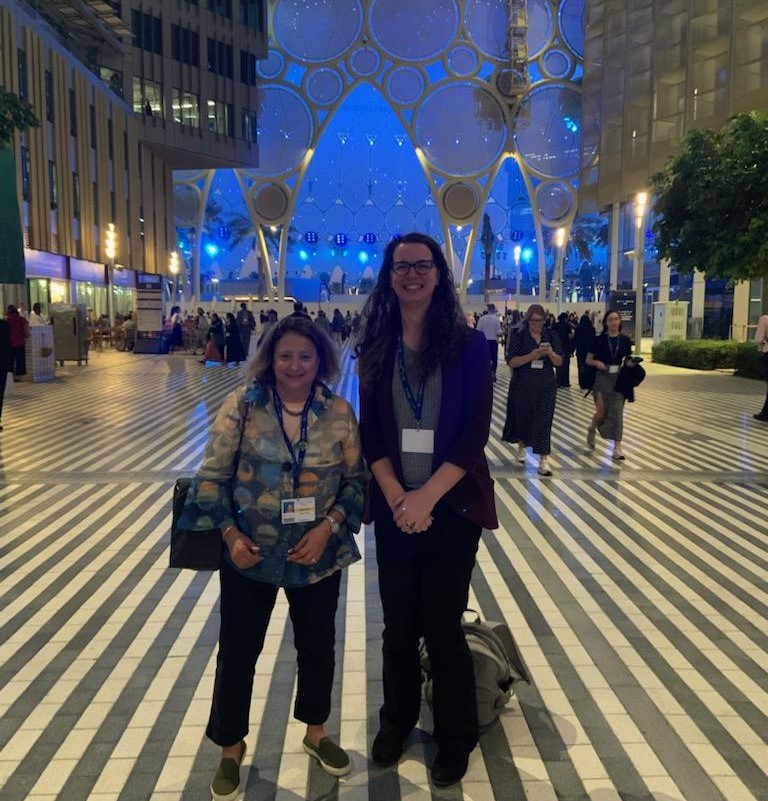
The many speakers at the events our team participated in and attended highlighted a variety of projects, programs, risks, and priorities, but three key themes emerged.
The Ocean in a Changing Climate
The ocean has absorbed 90 percent of the heat from climate change and is essential to the food security of more than 3 billion people. Yet the ocean faces serious threats from overfishing, bleaching, habitat destruction, pollution, and marine debris while SDG 14: Life Below Water is the least funded of the 17 SDGs. The presence of the Ocean Pavilion at COP for the second consecutive year, however, demonstrated that these challenges are beginning to get the attention and action they deserve, and two of our events reflected this heightened level of interest.
At “Science and Policy for Fisheries Adaptation to a Changing Climate and Ocean” organized by the Sasakawa Peace Foundation at the Ocean Pavilion, ministers from Tuvalu and Palau emphasized the vital importance of the ocean to their economic and food security and the success of the regional approach in sustainably managing Pacific fisheries. They also highlighted the threat of climate change to their marine resources, with around 20 percent of tuna stocks in the Pacific projected to move out of national waters into the less-regulated high seas. Director Yozell spoke about recent research and the impacts of overfishing in Gulf of Guinea states, the lack of reliable baseline fisheries data exacerbated by IUU fishing, and the potential benefits in extending learning from the Pacific’s regional approach to management.
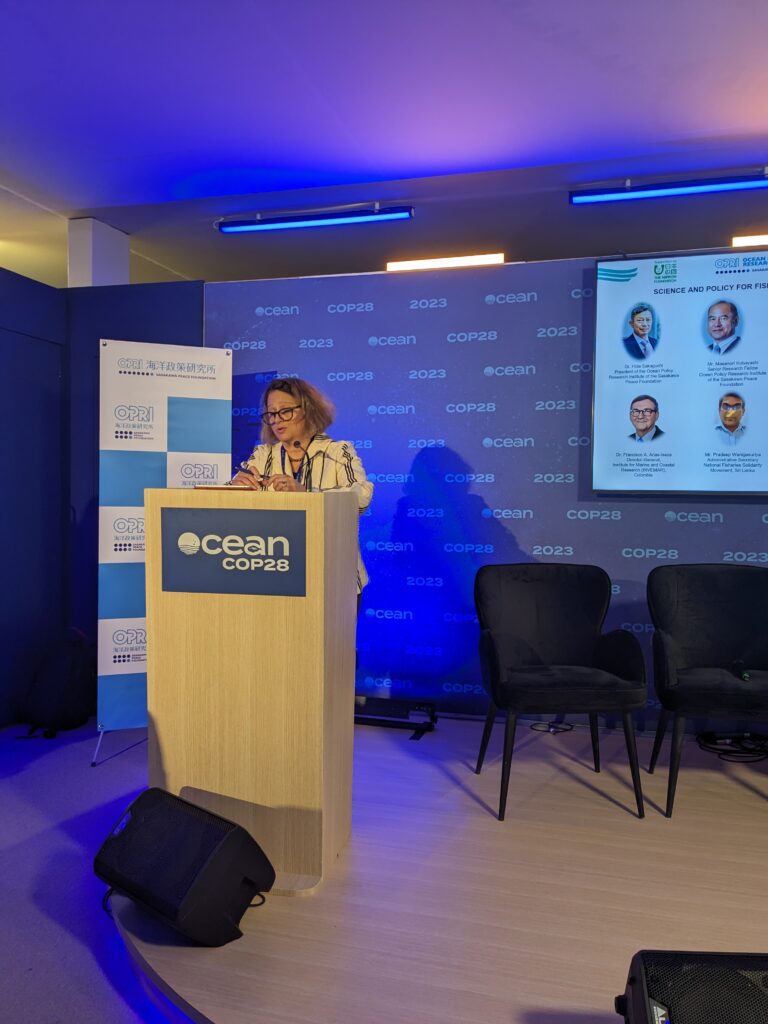
“Investing in Resilient Coastal Communities,” organized by the Ocean Risk and Resilience Action Alliance (ORRAA), USAID, the US Department of State, and NOAA, brought together practitioners across the Global South to discuss innovative projects to finance and implement nature-based solutions. These efforts protect against storm surges, sequester carbon, support biodiversity, and underpin the blue economy. Director Yozell spoke about how our CORVI assessment in Toamasina, Madagascar is providing sorely needed data and information on climate and ocean risks to a community where a lack of this type of data has been a key constraint to implementing resilience plans. The CORVI results will help local decision-makers identify priority projects and access the finance they need to implement them.
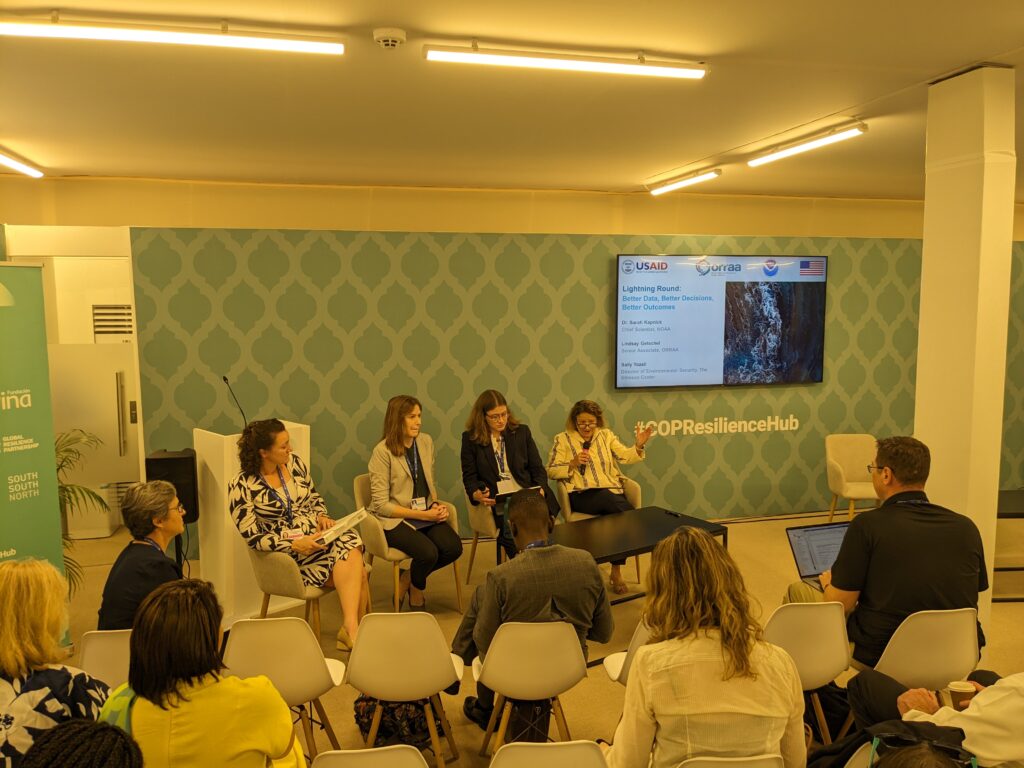
Integrated and Inclusive Planning
Just as ocean health affects inland communities, what happens on land affects marine ecosystems. To build coastal resilience, therefore, decision-makers and funders need to take a holistic, land-to-sea approach to risk assessment and adaptation planning. Such an approach needs to integrate the analysis and response to environmental, economic, social, and political dimensions of risk and bring together stakeholders from across government, the private sector, civil society, academia, and members of frontline communities in a whole-of-government and whole-of-society approach. At “Coastal Resilience Accelerator: Catalyzing Quick Climate Action in Cities”, the RT Hon. Patricia Scotland, Secretary General of the Commonwealth, provided opening remarks, reminding the audience that although climate resilience can be technical and complex, the ultimate objective is protecting the lives and livelihoods of those living on the frontlines of the climate emergency.
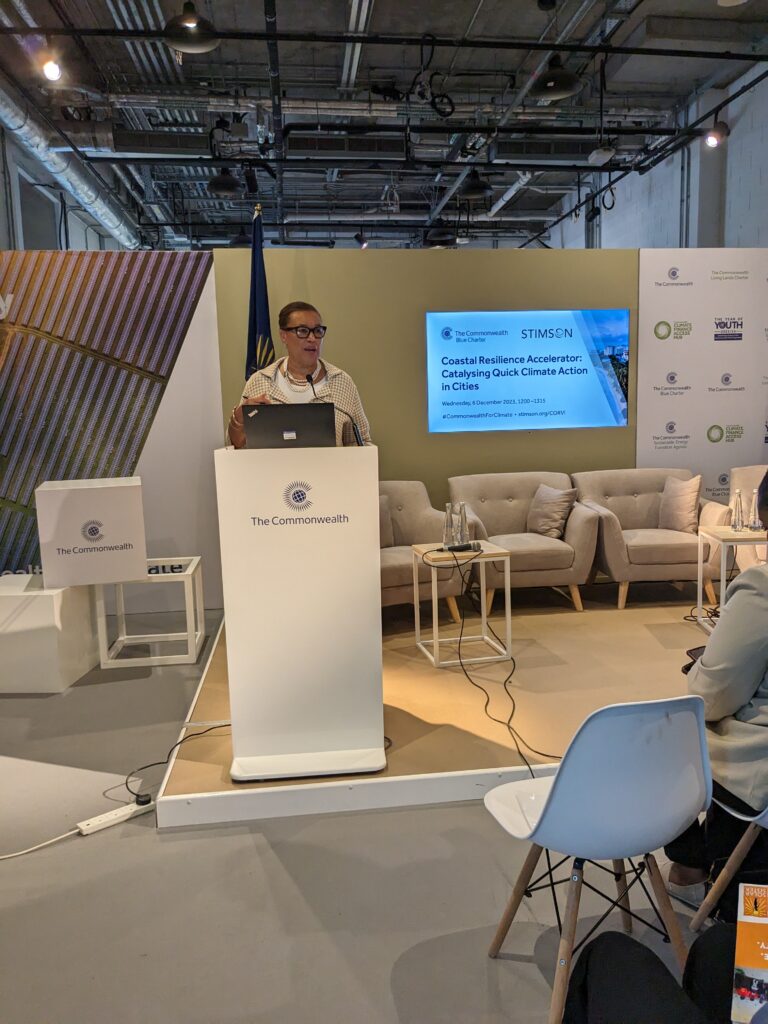
During the subsequent panel that Director Yozell moderated, World Bank Global Director of Environment, Natural Resources, and Blue Economy Valerie Hickey called for a move from funding green projects to funding green economies and the need to bring missing voices – such as those of small-scale farmers and fishers – into the conversation. An adviser to the President of Sri Lanka spoke about the establishment of a new office reporting directly to the presidency to coordinate integrated climate adaptation after seeing the benefits such an approach offered through the CORVI process. St. Kitts and Nevis Minister of Environment Clarke provided closing remarks about the importance of listening to local knowledge and the urgency of action for island states.
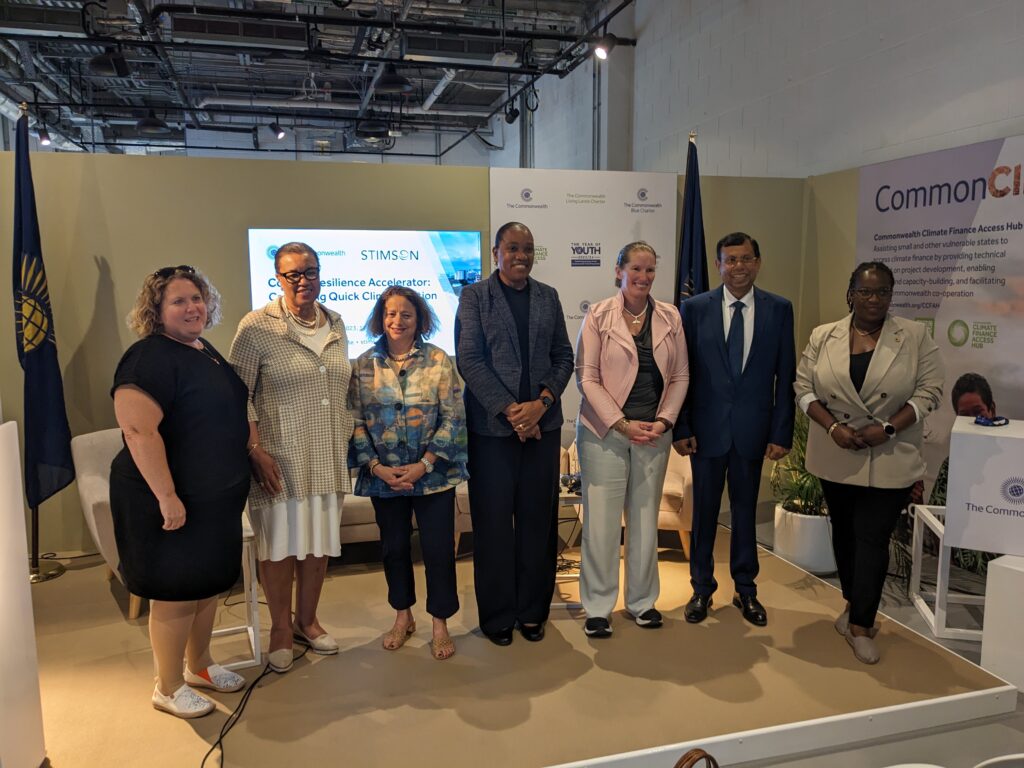
Increase and Simplify Finance
COP28 began with the formal establishment of the Loss and Damage Fund on November 30, followed by pledges totaling over $650 million, fulfilling a 30-year push led by small island states and developing states. The following days saw additional announcements on climate finance, including:
- $3.5 billion in new pledges for the Green Climate Fund, bringing this replenishment round to a total of almost $13 billion, a record level.
- The World Bank committed to increasing its funding for climate projects by $9 billion per year, to a total of $40 billion annually.
- The GEF and the Bezos Earth Fund announced $225 million for the Unlocking Blue Pacific Prosperity initiative.
But there is still a long way to go. The UN’s Adaptation Gap Report says that the adaptation financing lag far behind what is needed. Developing countries need $215-387 billion in adaptation financing per year, but developed countries provided just $21 billion in 2021, a 15% decrease from the year before. In “Sinking Cities – Coastal Subsidence and Land Loss in a Rising Sea”, Director Yozell talked about how too often limited funds are used to plug single climate risks, to repair crumbling roads, protect dwindling fish stocks, or protect against waterborne disease. An integrated approach that brings together coastal protection, waste management, human safety, and ecosystem health can be a more effective use of funds.
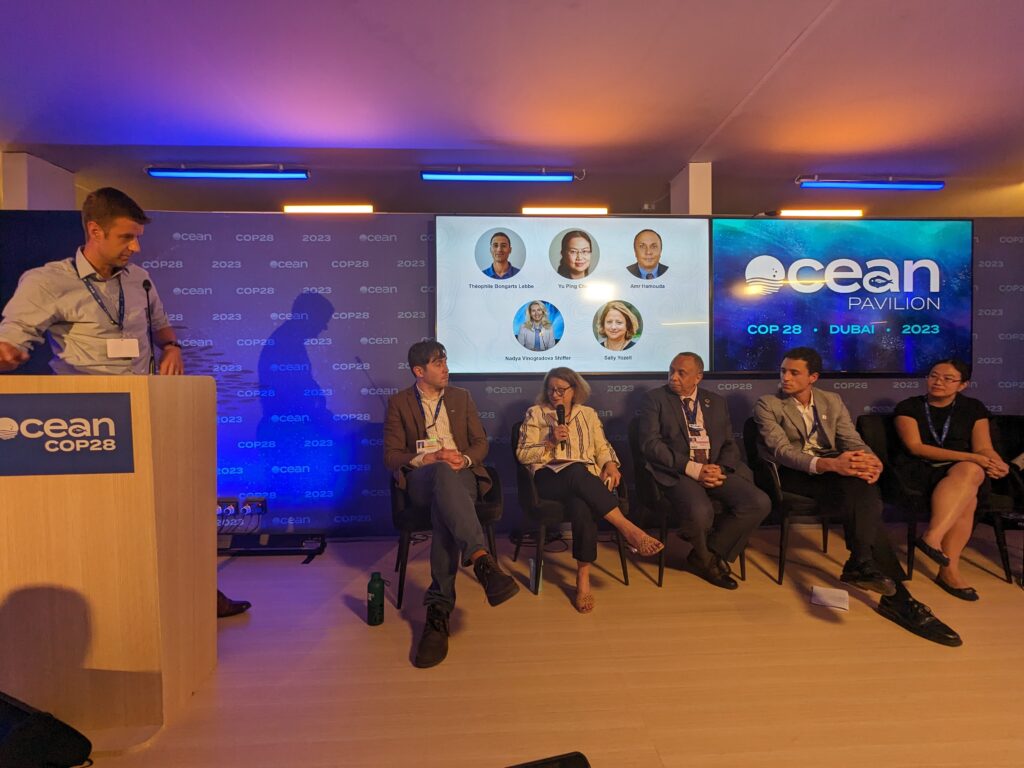
Alongside more adaptation financing, climate resilience requires more effective financing. In the “Coastal Resilience Accelerator” panel, Valerie Hickey called for building the capacity of developing country governments to spend the adaptation finance they receive more effectively. At the same event, several representatives from island states called for simplifying the process for accessing climate financing, which currently requires a complicated application and a team of consultants. They also called for expanding access to concessional financing and pointed to the Multidimensional Vulnerability Index as an effort to expand eligibility requirements beyond national income levels to include climate vulnerability.
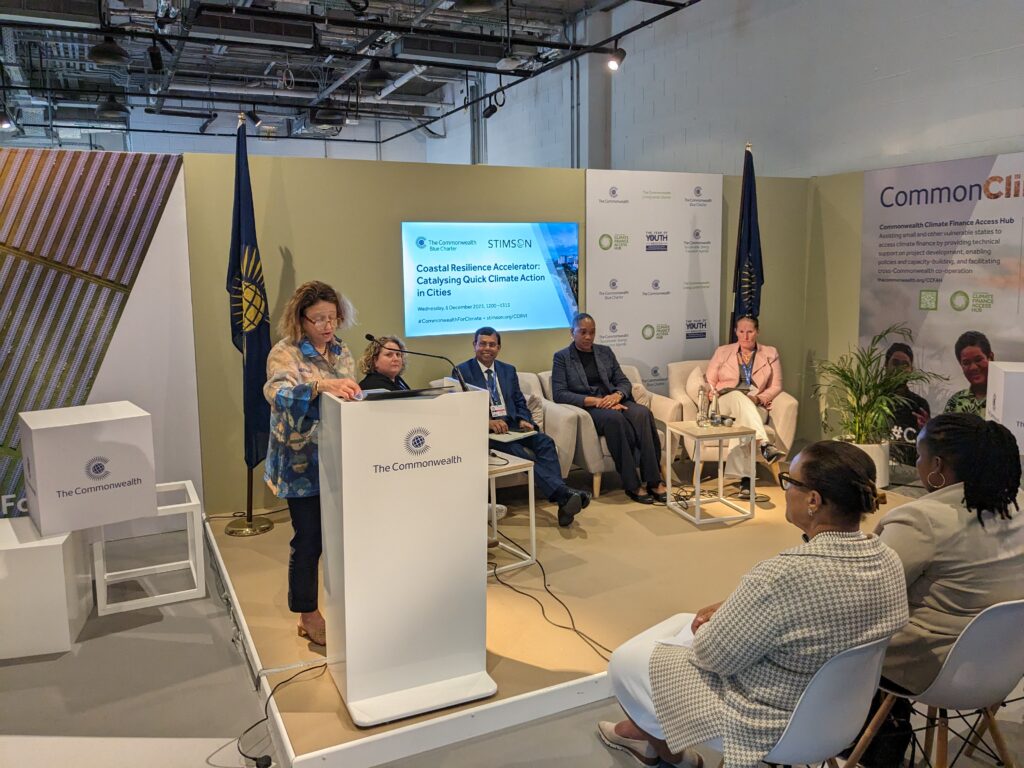
The conclusion of the COP saw another historic step. The final agreement, agreed to by all countries at the conference, is the first to explicitly recommend “transitioning away from fossil fuels”. Although falling short of the endorsement of a phaseout or phasedown of fossil fuels that island state representatives had called for, it represents an important step towards meeting the commitments set out in the Paris Agreement at COP21 in 2015. To avoid the existential threats the climate emergency poses to low-lying island nations, the transition must take place as quickly as possible.

